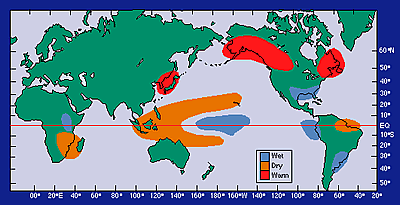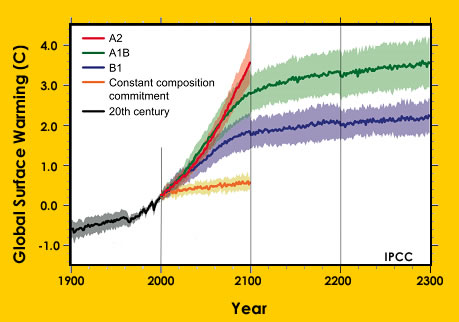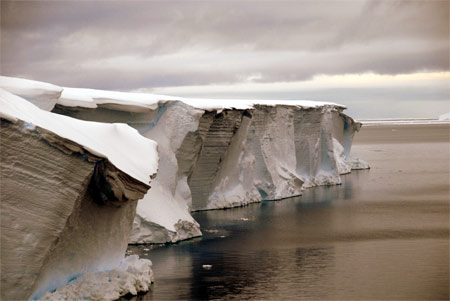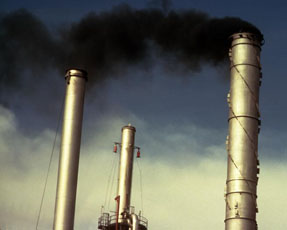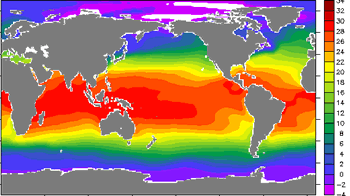Click on image for full size
Courtesy of UCAR
The North Atlantic Oscillation
When a low pressure system over Iceland and a high pressure system in the subtropical Atlantic change their intensity, weather throughout the Northern Hemisphere is affected. This is called the North Atlantic Oscillation (NAO).
Both pressure systems are in the atmosphere all year long. However, the pressure systems become more intense or weaken during Northern Hemisphere winter. The changes in atmospheric pressure cause changes in wind over the Atlantic as well as the number of storms, affecting weather of many places - a teleconnection pattern. They also cause changes in ocean temperature, ocean currents, and the amount of sea ice in the Arctic.
When the difference in pressure between the high and low is large, the NAO is in its positive phase. Strong winds cross the North Atlantic, bringing wet winter storms from eastern North America to northern Europe.
When the difference in pressure is small, the NAO is in its negative phase. Eastern North America and northern Europe have dry winters with fewer winter storms. The weather is rainy in southern Europe and North Africa.
These changes have impacts on human activities and natural ecosystems. For instance, the NAO may trigger bitterly cold winters in some areas, which means people use more fuel to heat their homes. The NAO fluctuations affect our food sources, since associated swings in temperature and rainfall influence yields of agricultural harvests and fisheries.
There was no pattern to how the NAO changed according to weather records from the 19th and most of the 20th Centuries. However, recently that has changed. There is evidence of more negative phases during the 1960s and 1970s and more positive phases during the 1980s and 1990s. Researchers are using computer modeling to investigate whether changes in the NAO are related to global warming.
The changes in atmospheric pressure associated with the NAO are connected with other patterns of atmospheric pressure including the Arctic Oscillation (AO) and the El Nino-Southern Oscillation (ENSO).







